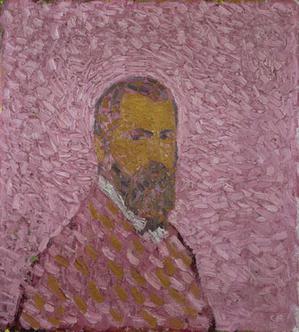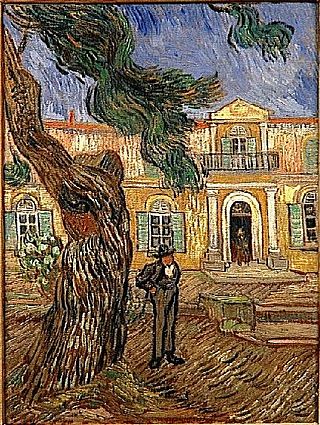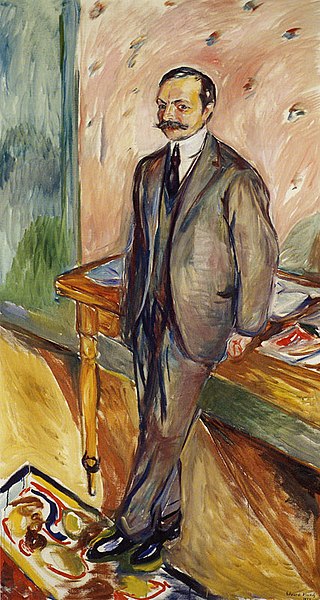
The Kunstmuseum Solothurn or Art Museum Solothurn is an art museum in the Swiss town Solothurn.

The Kunstmuseum Solothurn or Art Museum Solothurn is an art museum in the Swiss town Solothurn.
The museum opened in 1902. The early exposition showed the town's collections of arts, historical artifacts and natural historical objects. Around 1980, the natural history collection was moved to the Naturmuseum Solothurn, the museumsbuilding was converted and since then exhibits art from various collections along with short-period exhibitions of contemporary art.


The collection has five divisions: old masters, Swiss landscapes from the 18th until the 20th century, Swiss contemporary art, and two separate collections from gifts from collectors; the Dûbi-Müller and Josef-Müller collection, focused on international art from the late 19th and early 20th century, and a collection of works by Max Gubler.
Highlights of the collection of old masters include a "Madonna of the Strawberries" from 1425, the Solothurner Madonna by Hans Holbein the Younger, and works by Frans Snyders and Jusepe de Ribera. Swiss masters included in the landscape collection are Caspar Wolf, Alexandre Calame, Félix Vallotton, Giovanni Giacometti and local artist Otto Frölicher. Modern Swiss artists include Jean Tinguely, Méret Oppenheim and Bernhard Luginbühl. The contemporary collection includes works by Daniel Spoerri, Dieter Roth, Markus Raetz, Roman Signer, Silvie Defraoui, René Zäch, Albrecht Schnider, Uwe Wittwer, Felix Stephan Huber, Ian Anüll, Peter Wüthrich, Ingo Giezendanner, Robert Estermann.
The double collection of the sisters Müller contains paintings by Vincent van Gogh, Gustav Klimt, Paul Cézanne, Henri Matisse, Edgar Degas, Auguste Renoir, Fernand Léger, and Swiss painter Ferdinand Hodler.
The year 1890 in art involved some significant events.

Ferdinand Hodler was a Swiss painter. He is one of the best-known Swiss painters of the nineteenth century. His early works were portraits, landscapes, and genre paintings in a realistic style. Later, he adopted a personal form of symbolism which he called "parallelism".

The Kunstmuseum Den Haag is an art museum in The Hague in the Netherlands, founded in 1866 as the Museum voor Moderne Kunst. Later, until 1998, it was known as Haags Gemeentemuseum, and until the end of September 2019 as Gemeentemuseum Den Haag. It has a collection of around 165,000 works, over many different forms of art. In particular, the Kunstmuseum is renowned for its large Mondrian collection, the largest in the world. Mondrian's last work, Victory Boogie-Woogie, is on display at the museum.

Uwe Wittwer is a Swiss artist. He lives and works in Zürich, Switzerland. The media he uses include watercolor, oil painting, inkjet prints and video.

The Neue Pinakothek is an art museum in Munich, Germany. Its focus is European Art of the 18th and 19th centuries, and it is one of the most important museums of art of the nineteenth century in the world.

The National Museum of Serbia is the largest and oldest museum in Belgrade, Serbia. It is located in the central zone of Belgrade on a square plot between the Republic Square, formerly Theatre Square, and three streets: Čika Ljubina, Vasina and Laze Pačua. Its main facade is on the Republic Square and the official address ia 1a Republic Square.
Vincent van Gogh lived during the Impressionist era. With the development of photography, painters and artists turned to conveying the feeling and ideas behind people, places, and things rather than trying to imitate their physical forms. Impressionist artists did this by emphasizing certain hues, using vigorous brushstrokes, and paying attention to highlighting. Vincent van Gogh implemented this ideology to pursue his goal of depicting his own feelings toward and involvement with his subjects. Van Gogh's portraiture focuses on color and brushstrokes to demonstrate their inner qualities and Van Gogh's own relationship with them.

The Kunsthaus Zürich is in terms of area the biggest art museum of Switzerland and houses one of the most important art collections in Switzerland, assembled over time by the local art association called Zürcher Kunstgesellschaft. The collection spans from the Middle Ages to contemporary art, with an emphasis on Swiss art.

Giovanni Ulrico Giacometti was a Swiss painter. He was the father of artists Alberto and Diego Giacometti and architect Bruno Giacometti.

The Kunstmuseum Basel houses the oldest public art collection in the world and is generally considered to be the most important museum of art in Switzerland. It is listed as a Swiss heritage site of national significance.

Cuno Amiet was a Swiss painter, illustrator, graphic artist and sculptor. As the first Swiss painter to give precedence to colour in composition, he was a pioneer of modern art in Switzerland.

FrankBuchser (1828–1890) was a Swiss painter. He is noted for his portraits of notable American figures of the post civil war period and for his works with Oriental themes.

The Kunst Museum Winterthur is an art museum in Winterthur, Switzerland run by the local Kunstverein. From its beginnings, the activities of the Kunstverein Winterthur were focused on contemporary art – first Impressionism, then Post-Impressionism and especially Les Nabis, through post-World War II and recently created works by Richard Hamilton, Mario Merz and Gerhard Richter.

Saint-Paul Asylum, Saint-Rémy is a collection of paintings that Vincent van Gogh made when he was a self-admitted patient at the Saint-Paul asylum in Saint-Rémy-de-Provence, since renamed the Clinique Van Gogh, from May 1889 until May 1890. During much of his stay there he was confined to the grounds of the asylum, and he made paintings of the garden, the enclosed wheat field that he could see outside his room and a few portraits of individuals at the asylum. During his stay at Saint-Paul asylum, Van Gogh experienced periods of illness when he could not paint. When he was able to resume, painting provided solace and meaning for him. Nature seemed especially meaningful to him, trees, the landscape, even caterpillars as representative of the opportunity for transformation and budding flowers symbolizing the cycle of life. One of the more recognizable works of this period is The Irises. Works of the interior of the hospital convey the isolation and sadness that he felt. From the window of his cell he saw an enclosed wheat field, the subject of many paintings made from his room. He was able to make but a few portraits while at Saint-Paul.
Rudolf Staechelin was a Swiss businessman and art collector. He is considered one of the major Swiss collectors of the first half of the 20th century.

Josef Müller was a Swiss art collector and curator.
Max Silberberg was a major cultural figure in Breslau, a German Jewish entrepreneur, art collector and patron who was robbed and murdered by the Nazis. His art collection, among the finest of its era, has been the object of numerous restitution claims.

Hedy Hahnloser-Bühler was a Swiss painter, craftswoman, art collector and patron of the arts.

Jakob Wilhelm Wartmann was a Swiss art historian. He directed the Kunsthaus Zürich from 1909 to 1949.

View to Infinity are a series of paintings by Ferdinand Hodler of which he painted five versions. During their development he designed multiple drawing, sketches and paper forms to test their impressions. The painting of the first version took place between 1913 and 1917. It is now exhibited in the Kunstmuseum Basel, another one is exhibited in the Kunsthaus Zürich. A third, smaller and unfinished version is located in the Kunstmuseum Solothurn.